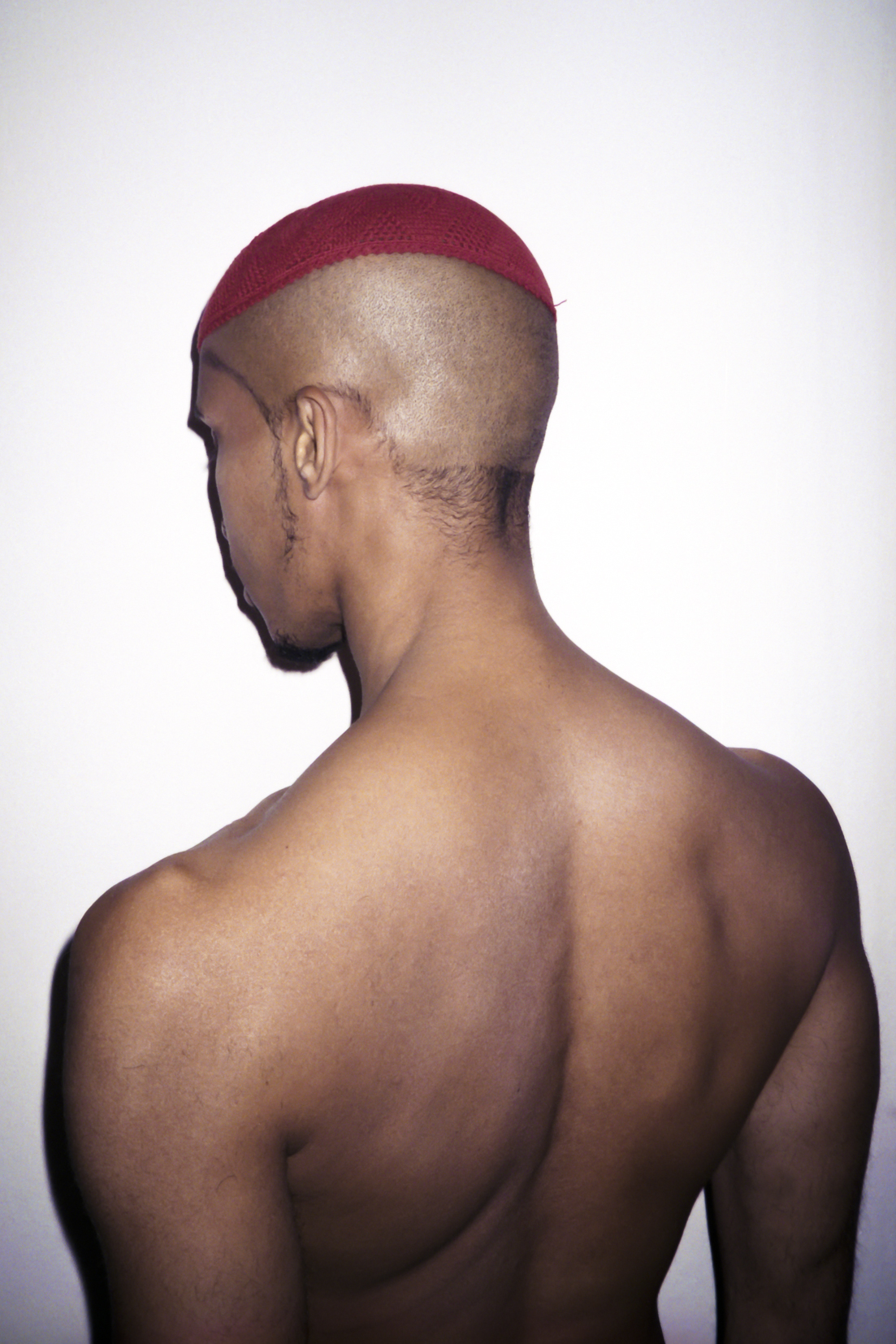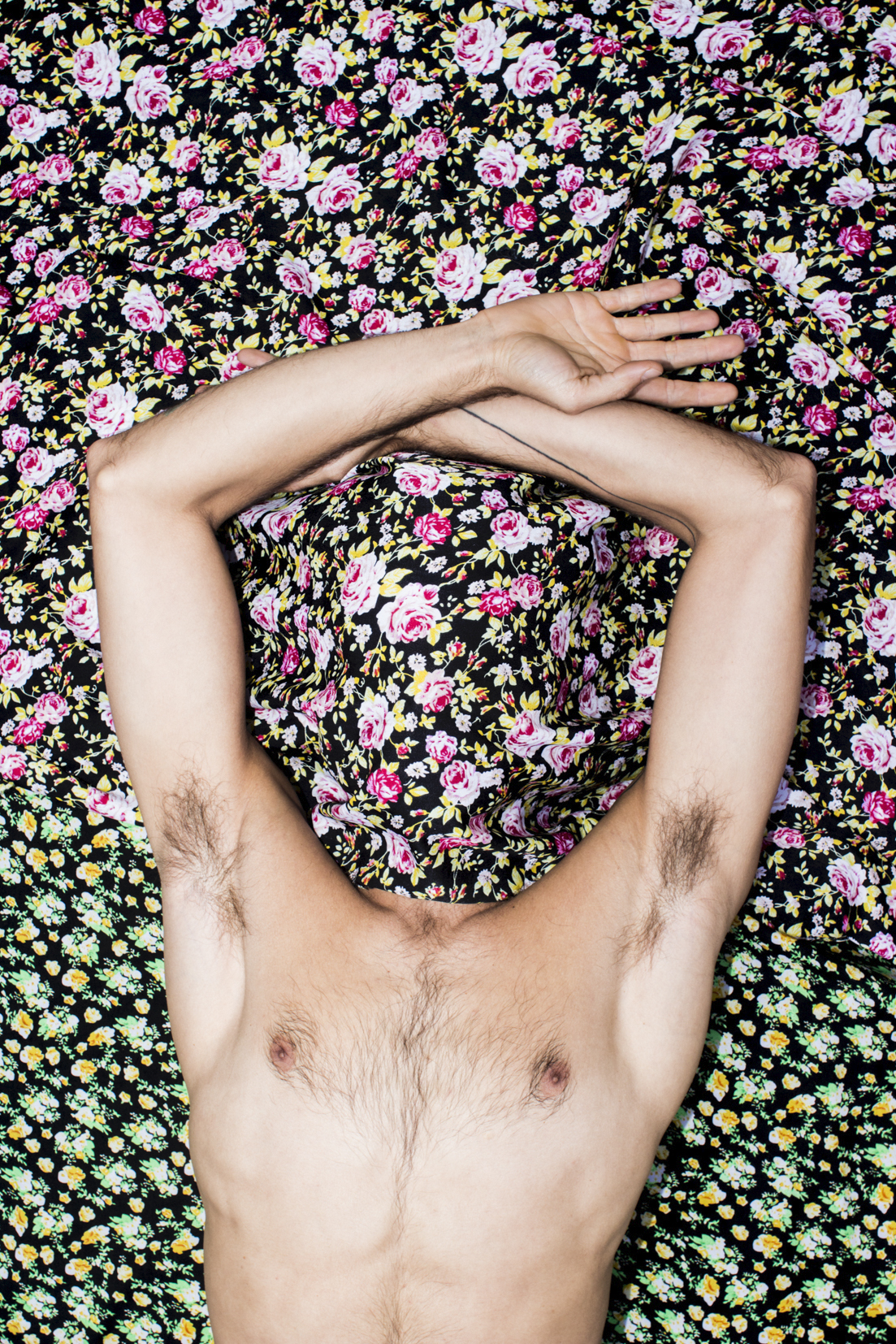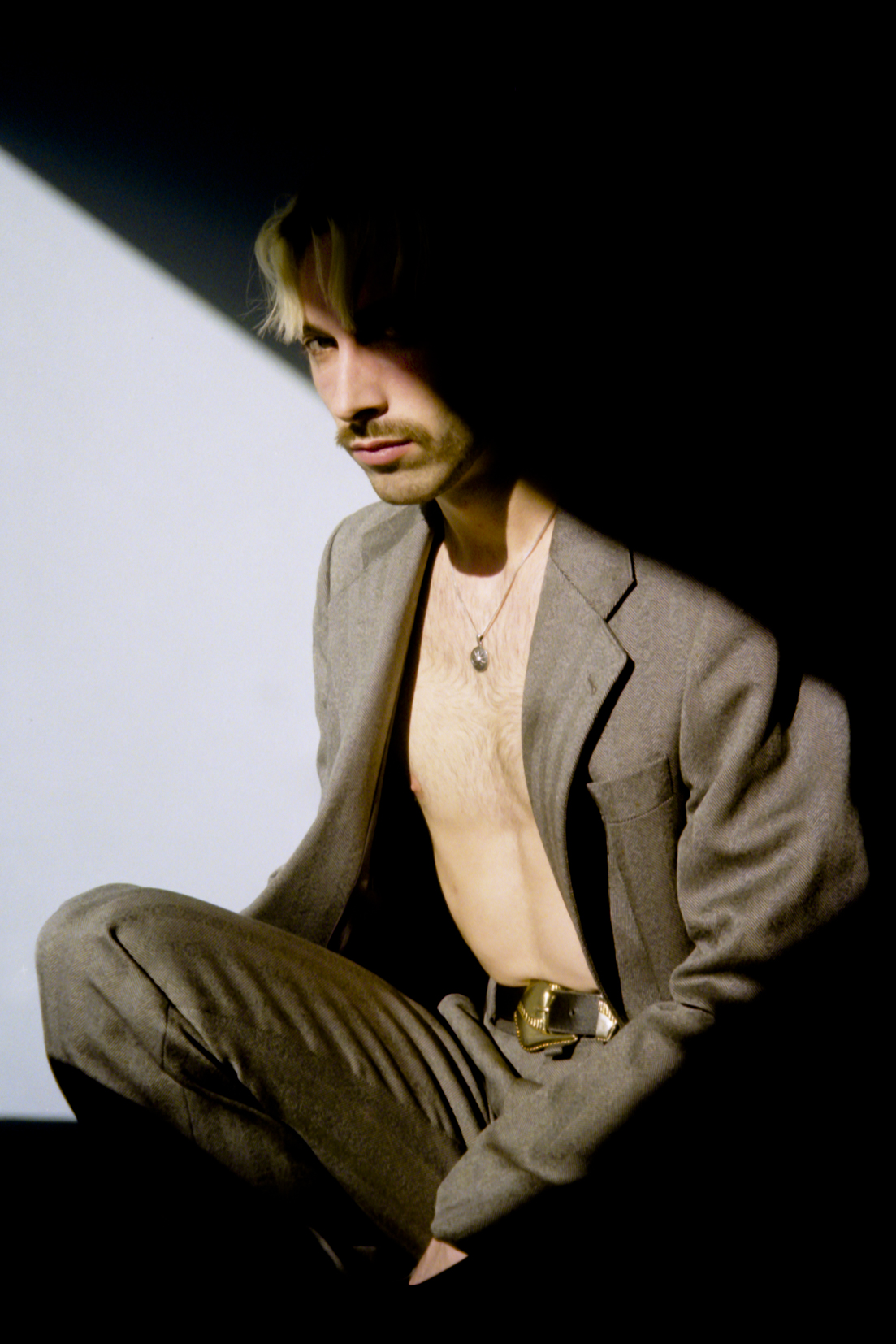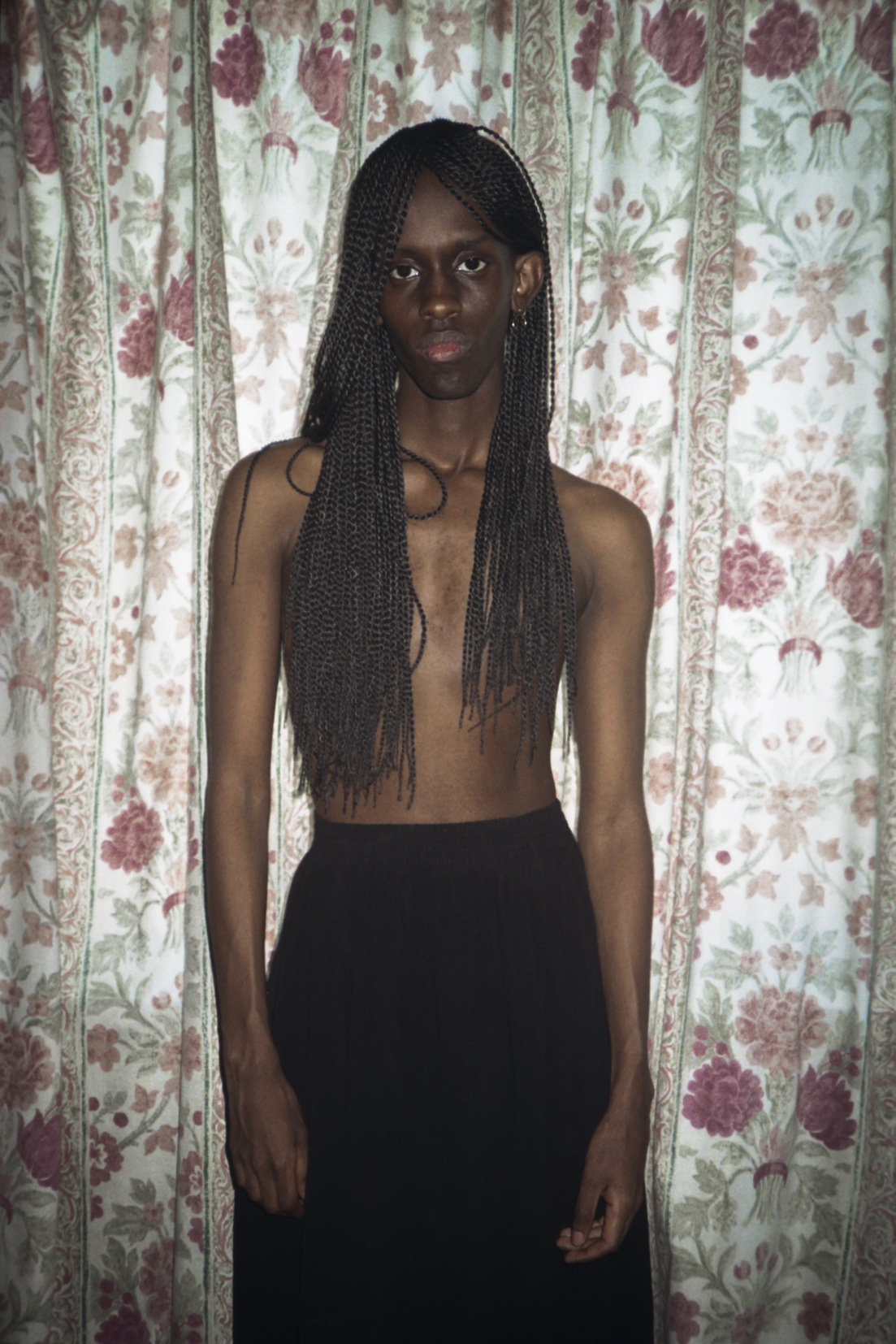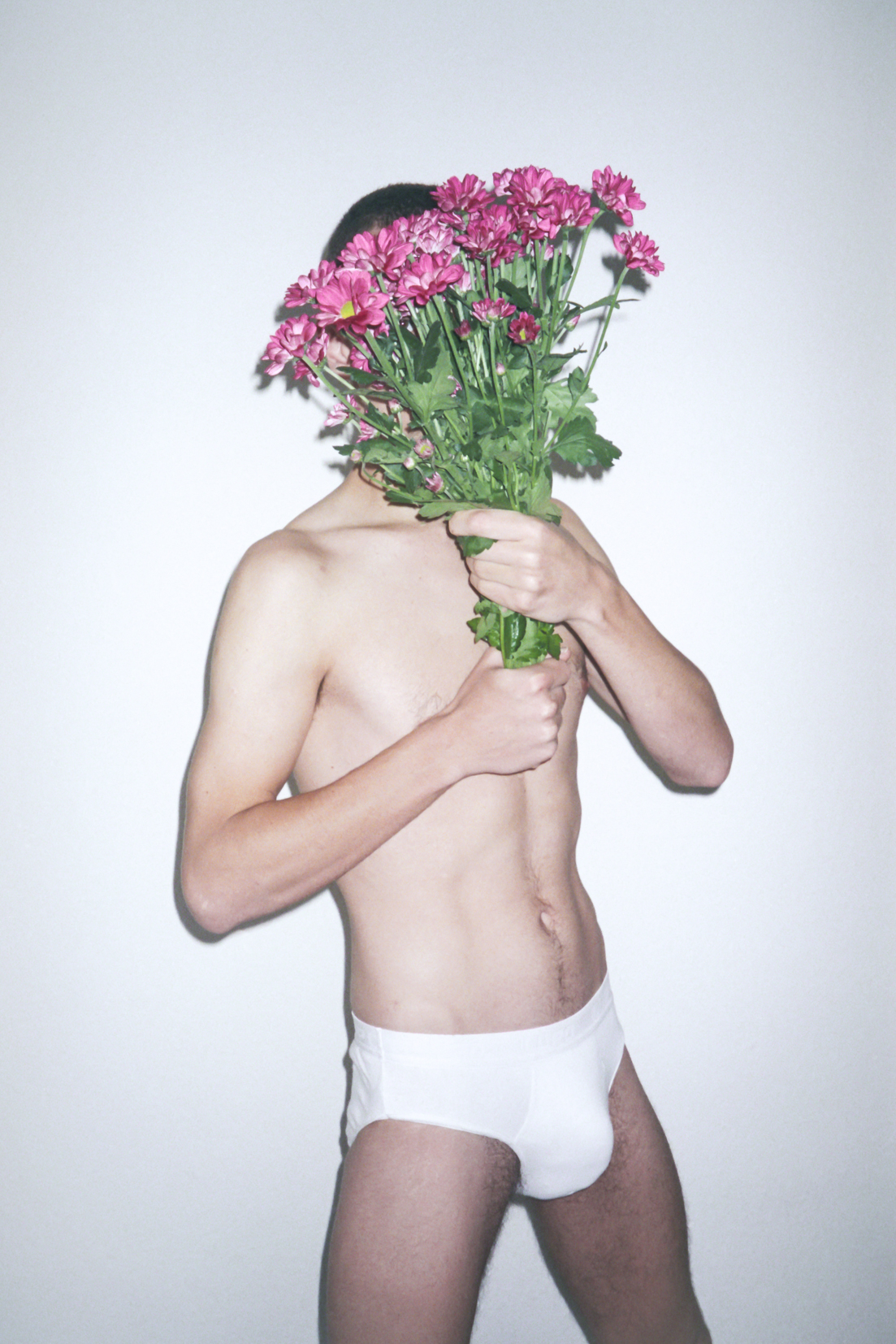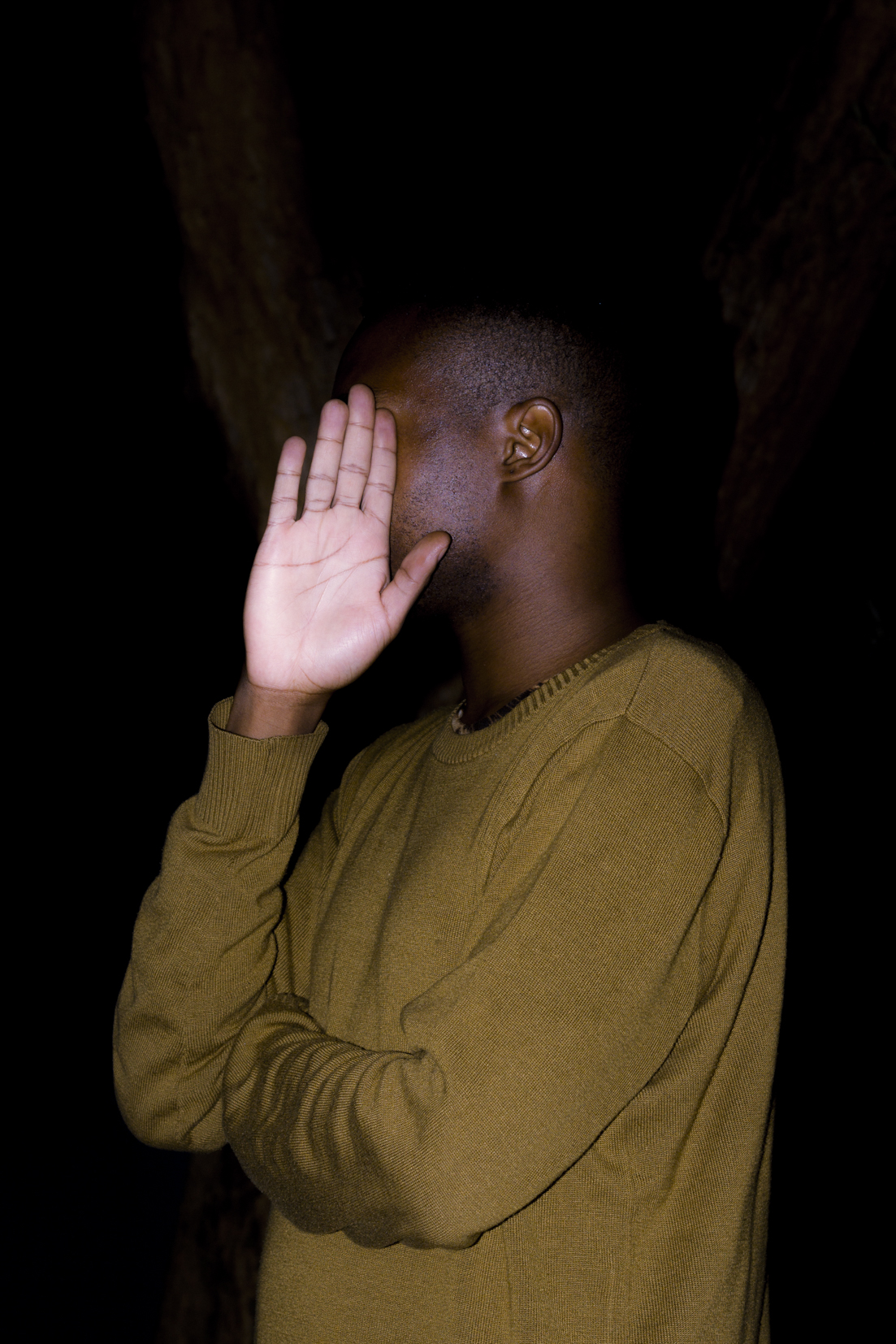French photographer Ugo Woatzi sees the political potential in aesthetics. He infuses a subtle form of activism in his images, using delicate fabrics and florals to reframe the queer body. The rampant and stifling homophobia Ugo experienced for the first 18 years of his life spurred the ongoing series Chameleon, an expressive counterpoint to the violence of having to ‘tone down’ queer cues amidst dominant heteronormative social structures. Having lived in France, Turkey, Belgium, South Africa — and presently completing an end-of-year residency at Cité des Arts in La Réunion — he has observed diverse contexts of gender performance. After struggling with his own identity for years, Ugo was able to embrace his sexuality as a point of pride through his community and the release valve of nightlife. Now, he signs off his emails with “Queer Regards”, and squarely engages with visibility in his work.
We spoke with the photographer about the oppressiveness of a small town upbringing, the advantages of self-as-subject and the freedom of gay clubs.

You’ve lived in very different corners of the world: Toulouse, Istanbul, Johannesburg, Brussels, presently La Réunion. How has your vision of masculinity changed according to place?
I was born in the southwest of France, in a small village where everyone knows each other. Very traditional and patriarchal, where you have to be a man in a certain way: strong and not very sensitive or emotional… It was impossible for me to accept and show my sexuality freely there. I tried to when I was a kid… Then other kids started saying, “pédé, pédé, pédé” [French word for fag] all the time. When you hear that, you’re like, am I sick? Do I have a problem? I started to protect myself and to perform as a straight guy; I even started dating a girl.
When I was 18, I moved to Toulouse. I joined a theatre company and met open-minded people. I was still hiding. Everyone around me understood that I was gay, but I didn’t want to accept it. But I discovered how men can be different, how masculinity can be different. It was a big change.
During my third year of university, I did an Erasmus exchange in Istanbul. It was my first trip outside of France. It was exciting. I was like, I can be whoever I want! I felt very free because nobody knew me. I went back to France, where I was studying sociology and political science. Then I moved to Brussels for my masters, which I never finished. I reached a turning point in my life, like, fuck, I need to accept who I am, I need to do what I want. I was 25. I started to discover the queer scene in Brussels — more than just the gay scene, but the political and activist sector — and it was liberating. Especially the nightlife, which is a space of freedom, of experimentation. Partying is a free space — sometimes the only space where we can be together and forget about life. Public spaces can be awful for queer people. We need each other in order to survive in this society.
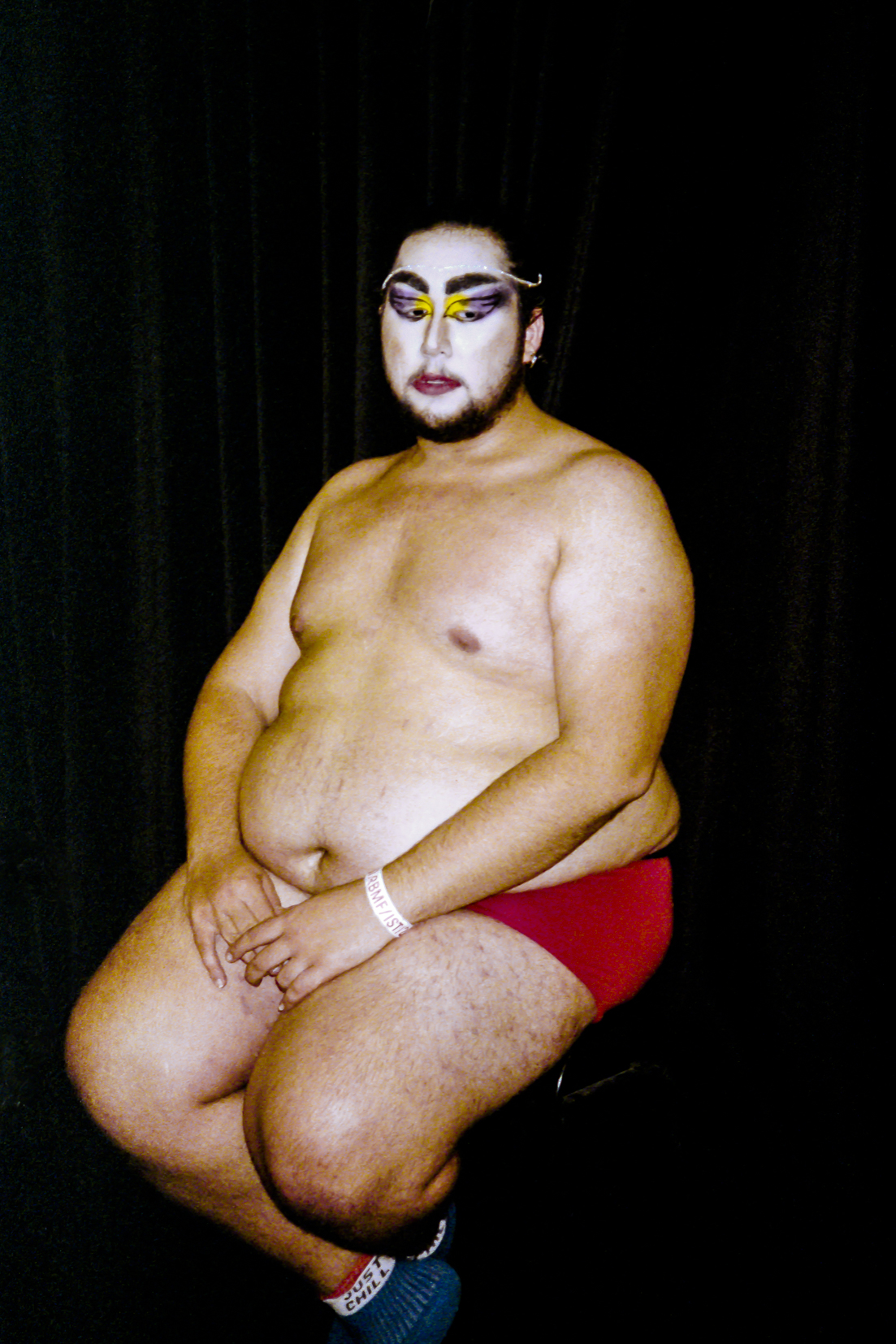
After this ‘fuck it’ moment, how did you shift into photography?
I wanted to study photography since I was young. I saved some money, but I wasn’t ready to start from the beginning. A friend of mine studied at the Market Photo Workshop in Johannesburg; the school was very open. There I discovered Samuel Fosso, Claude Cahun, Pierre Molinier and they really changed my world completely. I understood that I can use photography as a political tool.
Can you expand on how this queer photographic legacy shaped your thinking?
All three of the photographers I cited used self-portraiture. I also discovered Zanele Muholi, and was fascinated by Ren Hang. In the beginning, I was doing self-portraiture to heal from my past and understand who I was, what I wanted to be. It was important for me to discover my body, and I like constructing my aesthetic by trying it on myself. It was comfortable because I was just in my room, taking a million pictures. I started to slowly build my visual identity. My work is political, but I like to create a beautiful image, because it’s also a way to dream, to create utopian spaces.

How did you shift from self-portraiture to working with others? When you’re staging particular gestures, how do you direct your subjects?
I started the series Chameleon in 2018, at a point when I was feeling comfortable enough to share stories. I see it as an ongoing project; I’m still developing it. I collaborate with friends. I use flowers as a poetic visual metaphor, and I think about colours, shapes, textiles. Textiles have this duality: you can hide, but you can also show your identity. A lot of queer people use outfits to show who they are… I remember seeing the work of South African photographer Lolo Veleko, who did a series on statement street fashion. I also like to play with this idea from Michel Foucault about heterotopia. For me, I use photography as a space of emancipation, but also a space of invention.
Do you feel part of a bigger movement of queer representation in France? Within literature, there’s this young generation, like Edouard Louis or Fatima Daas, addressing the burdens of growing up queer and French. Is there any changing of the tides, or not really?
I don’t know. When I read Edouard Louis’ book, it took me so long to finish it. It was very painful because I could relate to his childhood. I think that being an LGBTQ+ person in the countryside is still terrible. In a big city, you don’t really realise. In the region where I grew up, there is no change. As soon as I could, I left for a bigger city. When I arrived in Toulouse, I met so many young guys who were freely gay. The countryside is still very, very, very complicated. It’s the same for a friend from Morocco — family, culture puts so much pressure on an LGBTQ+ person. When I was thinking, Who can I talk to? There was no one. There were no apps, no Instagram. Even though social media is not enough.

It’s so isolating. Tell me about the residency you’re currently doing in La Réunion?
I’m working with Brandon Gercara, a non-binary artist from here. I try to question my position as a white person working on the territory — I’m very glad to do this residency with a local artist, because I don’t think I would do it by myself. We are in the process of creating fictive queer characters: she’s working with performance and installation, and I’m doing photography and video. We put our process together, trying to escape reality while creating images for a space of acceptance. We’re going to show this starting 9 December, so it’s still very fresh, but we want to continue this project. This year is the first Pride in La Réunion.
Oh, wow.
Yeah. So it’s complicated, as you can imagine — there is not much space for queer people — but it’s also very beautiful. That’s why we wanted to create fictional superhero characters.
The region needs a new mythology.
Exactly. It’s so nice to create queer spaces, to think about how we can do that together. It’s so important.
